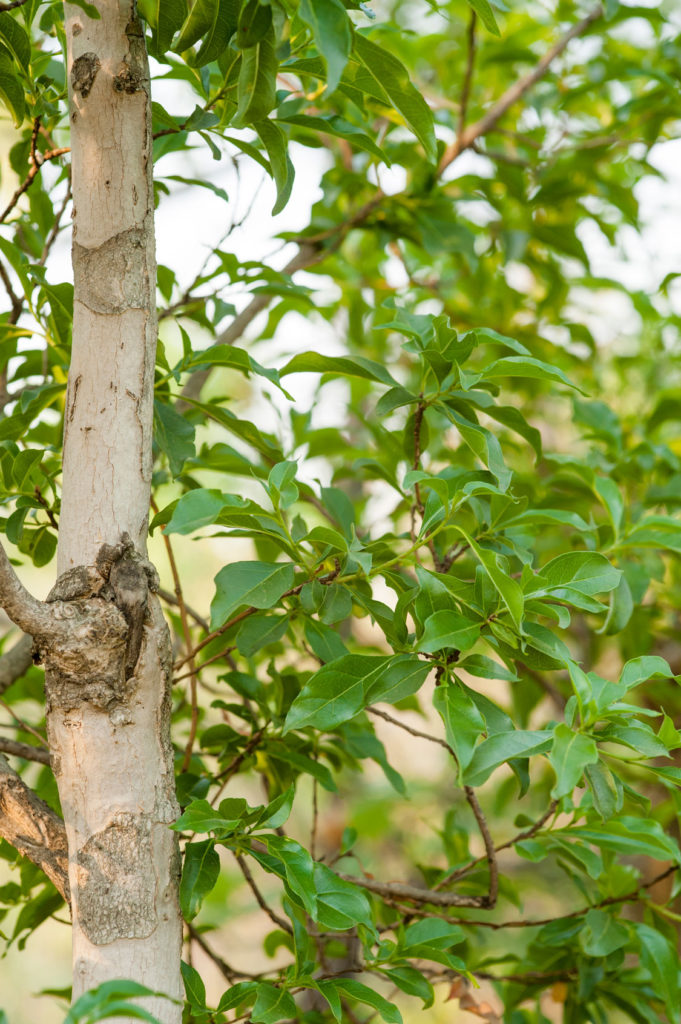Nothing says Christmas like a beautifully decorated tree. Barry Gush, consulting tree architect at Sun Trees, suggests some indigenous varieties that are suitable for a container during the festive season and will enhance your garden for years to come
EUCLEA CRISPA (BLUE GUARRIE)
The blue guarrie is a neat upright tree with a dense round canopy of blue-green leaves. Interestingly, it’s a member of the Ebony family of which 35 species grow in South Africa. The rusty to dark-brown bark is often covered with lichen, and on more mature specimens, breaks into uneven block shapes. This small evergreen tree is frost hardy and wind resistant, making it ideal for more compact gardens, where it provides shade all year round. The tiny yellow-green bell-shaped flowers have a sweet scent and attract butterflies and birds alike.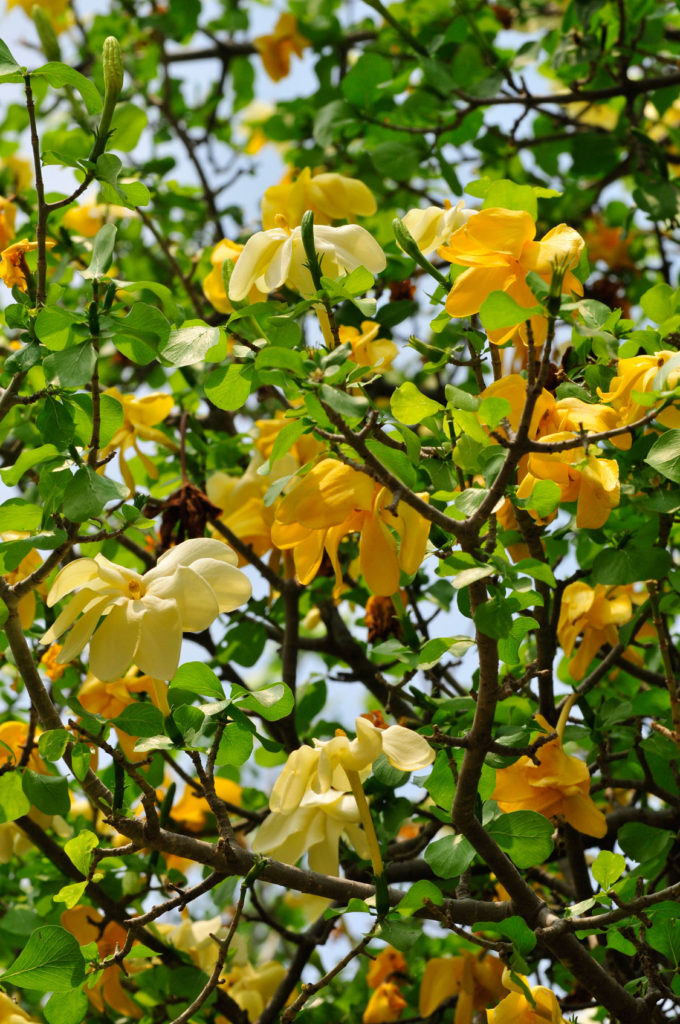
GARDENIA VOLKENSII (TRANSVAAL GARDENIA)
The evergreen to semi-deciduous Transvaal gardenia is a slow grower that can reach a height of 8m. The dense, rounded crown has an angular branching pattern. From July to October, the tree produces masses of white, sweetly scented flowers that age to creamy-yellow. These blooms normally open during the night, spreading their fragrance throughout the garden. The egg-shaped fruit are an added attraction and emerge from November to January. This tree makes a lovely focal plant and with its non-aggressive root system is ideal for smaller gardens. It can also be used for informal hedging and screening, as a container plant and is a wonderful bonsai subject.
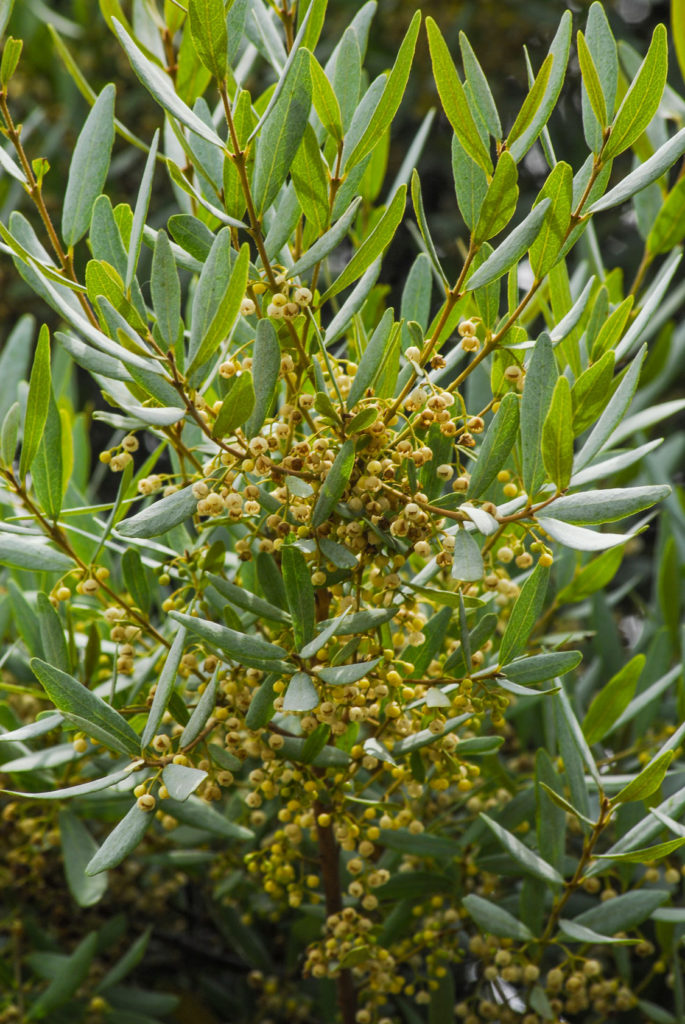
PODOCARPUS HENKELII (HENKEL’S YELLOWWOOD)
The yellowwood is often considered to be South Africa’s national tree. Podocarpus henkelii has bright green to bluish green leaves that are arranged in a spiral at the end of branchlets. The foliage is dense and glossy and has a drooping leaf whorl and an inverted cone-shape habit. The branches are strong enough to hold decorations. As one of our most ornamental, indigenous conifers, it can reach 20–30m high in its natural habitat. However, this yellowwood is equally happy in a container.
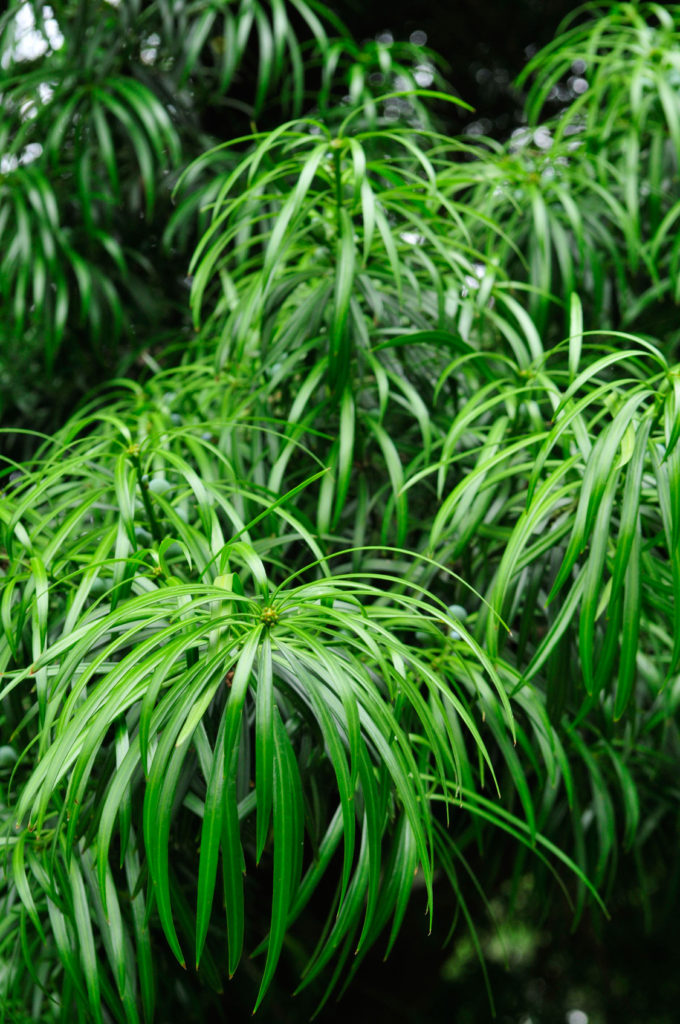
GREWIA OCCIDENTALIS (CROSS-BERRY)
Grewia occidentalis is a scrambling deciduous shrub or small tree, reaching about 3m high. It has shiny dark-green leaves and produces star-shaped purple flowers during summer. The pretty flowers attract butterflies and bees while the four-lobed fruit is edible. The name of the tree is derived from the shape of the brownish-yellowish berry. The cross-berry can be untidy and straggly in the wild, but takes well to clipping. Left in its natural form with its irregularly tiered branch levels and rangy structure, it’s an ideal tree for Asian-style gardens. Occasional pruning can result in a more dense branch system which is good for attracting shy birds like robins. It’s frost and drought hardy and the root system isn’t aggressive. It thrives in either full sun or shade and makes a wonderful hedge or espalier tree when trained and clipped.
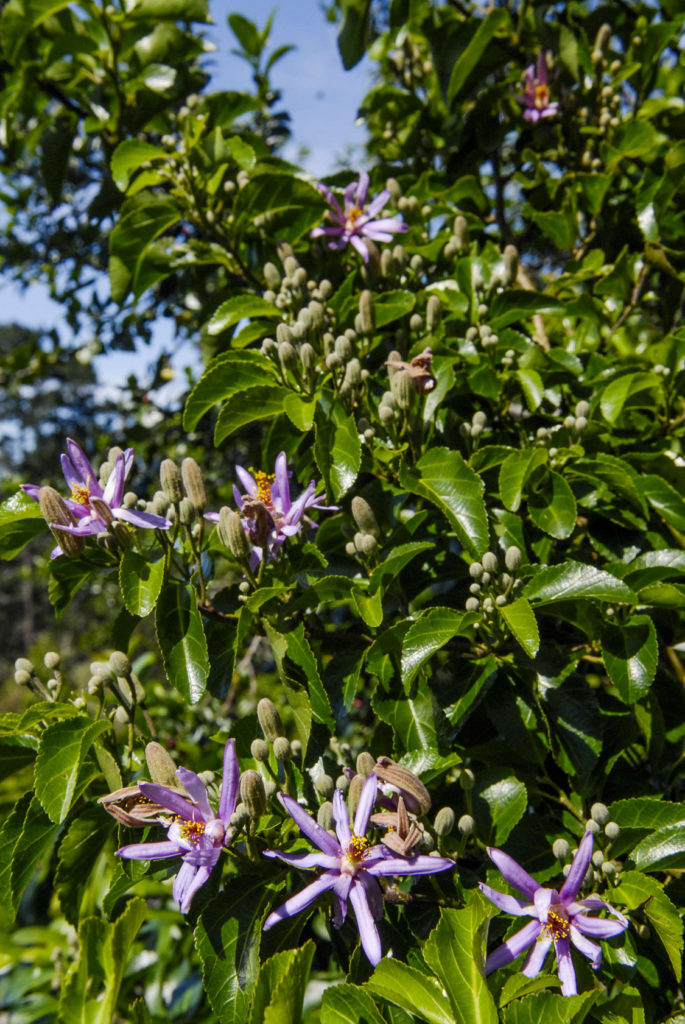
WIDDRINGTONIA NODIFLORA (MOUNTAIN CEDAR)
This cedar’s appearance is probably closest to the traditional Christmas tree. A large shrub or small tree, it has a conical shape and needle-like leaves. The light-green foliage becomes darker as the leaves mature. Cones ripen towards autumn. A slow grower, it’s frost hardy and drought resistant with a non-invasive root system. Branches cut from trees planted in the garden can be also be used indoors as a Christmas tree.
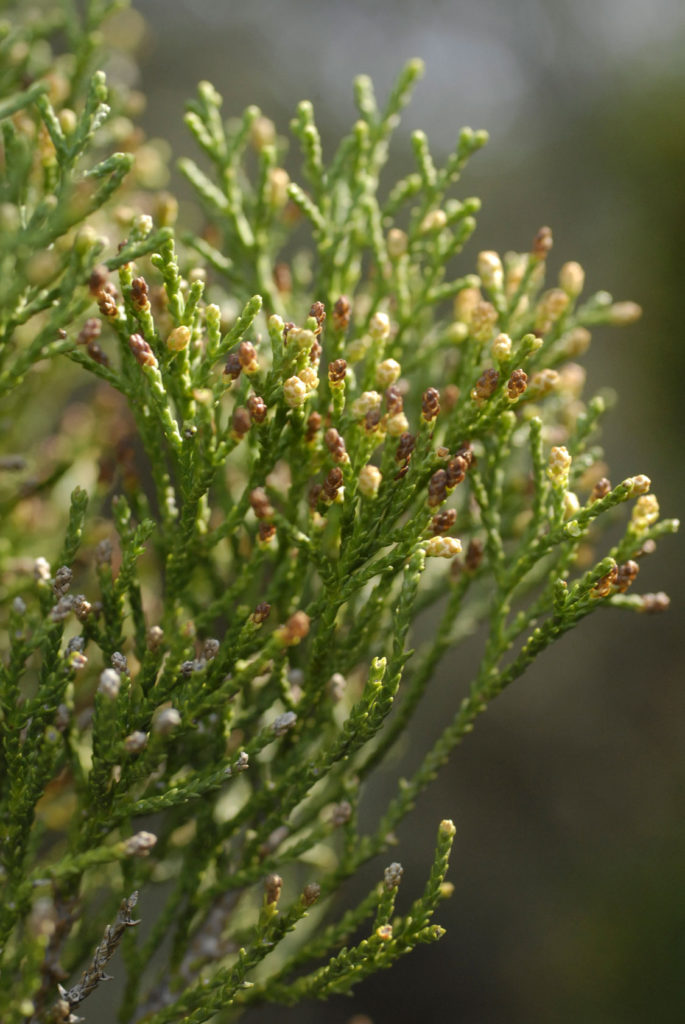
HETEROPYXIS NATALENSIS (LAVENDER TREE)
This deciduous tree has striking, light-coloured bark. The contrast between the glossy, dark-green leaves and the whitish stem ensures that it’s a focal point. Reaching a height of up to 6m, it has a drooping habit and the leaves produce a lavender smell when crushed. Small, sweetly scented flowers appear during spring and summer, followed by shiny brown fruit from March to May. Another bonus is the autumn foliage with its rich red and brown tints.
